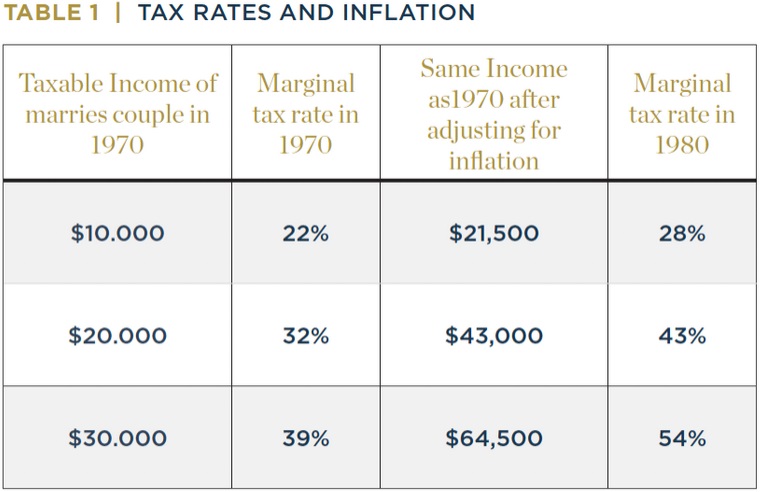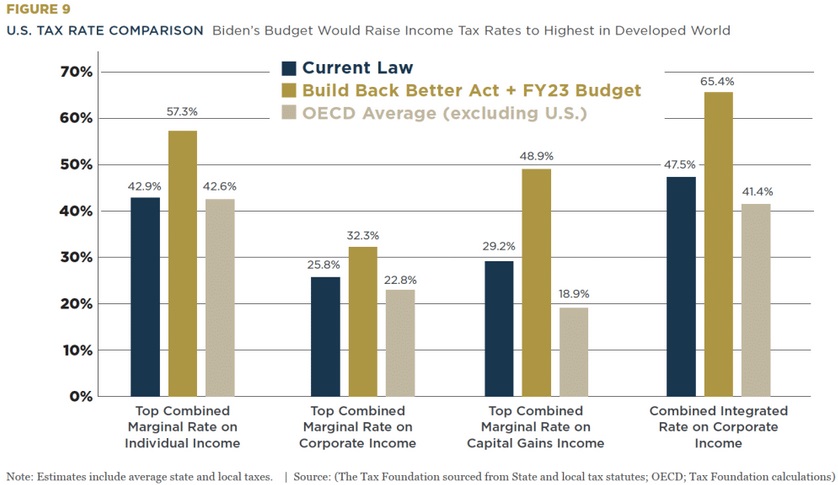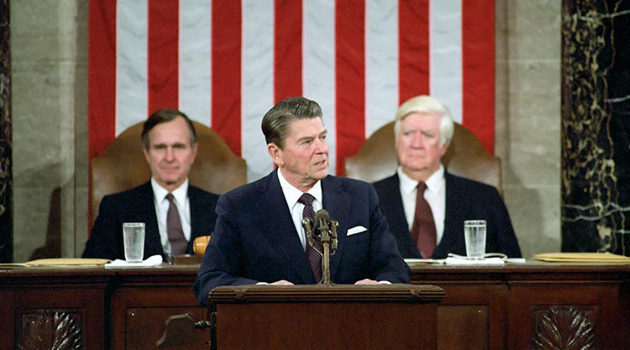In Part I of this series, I looked at Ronald Reagan’s reasonably successful track record on government spending (which could be characterized as fantastically successful when compared to other Republican presidents) and explained why we need Reaganomics 2.0 to deal with today’s federal leviathan that is far too big and projected to get even bigger.
In Part II, let’s look at Reagan’s track record on tax policy and ask whether we need another dose of “supply-side economics.”
When he took office, one of Reagan’s main goals was to lower marginal tax rates on American households. This was necessary for two reasons.
- First, tax rates were too high, including a staggering 70-percent top rate for the personal income tax.
- Second, more and more Americans were being hit by punitive tax rates because of “bracket creep.”
Since I’ve already written a lot about the problem of high tax rates, let’s address the second point.
During the 1970s, when inflation was high, there was understandable pressure to increase wages and salaries so that workers did not fall behind.
But when employees got pay raises to keep pace with inflation, that often meant they had to pay higher tax rates even though their inflation-adjusted incomes stayed constant.
This was not a trivial problem. Here’s a table from the study I recently wrote for the Club for Growth Foundation. As you can see, middle class households wound up paying much higher marginal tax rates as the 1970s came to a close.

President Reagan recognized this problem and he did two things to help American families.
- First, he lowered tax rates across board as part of his 1981 tax cut and his 1986 tax reform, with the top tax rate dropping from 70 percent in 1980 to 28 percent in 1988.
- Second, he “indexed” the personal income tax for inflation, meaning households no longer would be pushed into higher tax brackets because of bad monetary policy.
These reforms helped produce an economic boom.
Here’s some of what I wrote in the study.
In 1981, Reagan convinced Congress to enact the Economic Recovery Tax Act, which phased in lower income tax rates for all taxpayers. …Equally important, Reagan got Congress to adopt “indexing,” which meant that tax brackets were automatically adjusted for inflation. That reform ensured that government no longer profited from inflation. During his second term, Reagan then worked with Congress to approve the Tax Reform Act of 1986. That legislation further lowered tax rates for all taxpayers. …the Reagan tax cuts helped trigger an economic boom. The United States experienced a record economic expansion, with millions of jobs being created and family incomes rising to record levels after the malaise and stagnation of the Carter years. Households earned more money, and they got to keep a greater share of their earnings. Net worth also increased substantially, putting America’s middle class in a very strong position.
By the way, even though my left-leaning friends are viscerally opposed to lower tax rates for upper-income taxpayers, it’s worth noting that the IRS wound up collecting more money from the rich after Reagan slashed tax rates. A lot more money.
All things considered, the Reagan tax cuts were a smashing success (notwithstanding Paul Krugman’s protestations).
But is Reagan’s supply-side tax policy still relevant today?
Some people think tax policy is no longer a problem because individual income tax rates are lower than they were when Reagan took office and indexing is still protecting people from inflation (which has recently been a problem).
For what it’s worth, I think personal income tax rates are still far too high.
But the main reason that we need Reaganomics 2.0 is that the United States faces a major problem with double taxation. To be more specific, the IRS imposes very harsh tax rates on income that is saved and invested.
Here’s Figure 9 from the paper. You can see on the left that America’s personal income tax rate is only slightly higher than the average of other rich nations and the corporate tax rate is only somewhat higher.
But you can see on the right where America really lags, with significantly higher tax burdens on capital gains and dividend income.

Incidentally, the chart also shows that the United States would be wildly uncompetitive if Biden’s tax proposals were enacted.
So the obvious takeaway is that Biden’s class-warfare plan should never be resuscitated and that lawmakers instead should lower (or ideally eliminate) the capital gains tax and to reduce (or hopefully eliminate) the double tax on dividends.
P.S. The capital gains tax is not indexed for inflation, so people often are hit by that tax even when they lose money on an investment. That’s obviously another area where we need Reaganomics 2.0.


